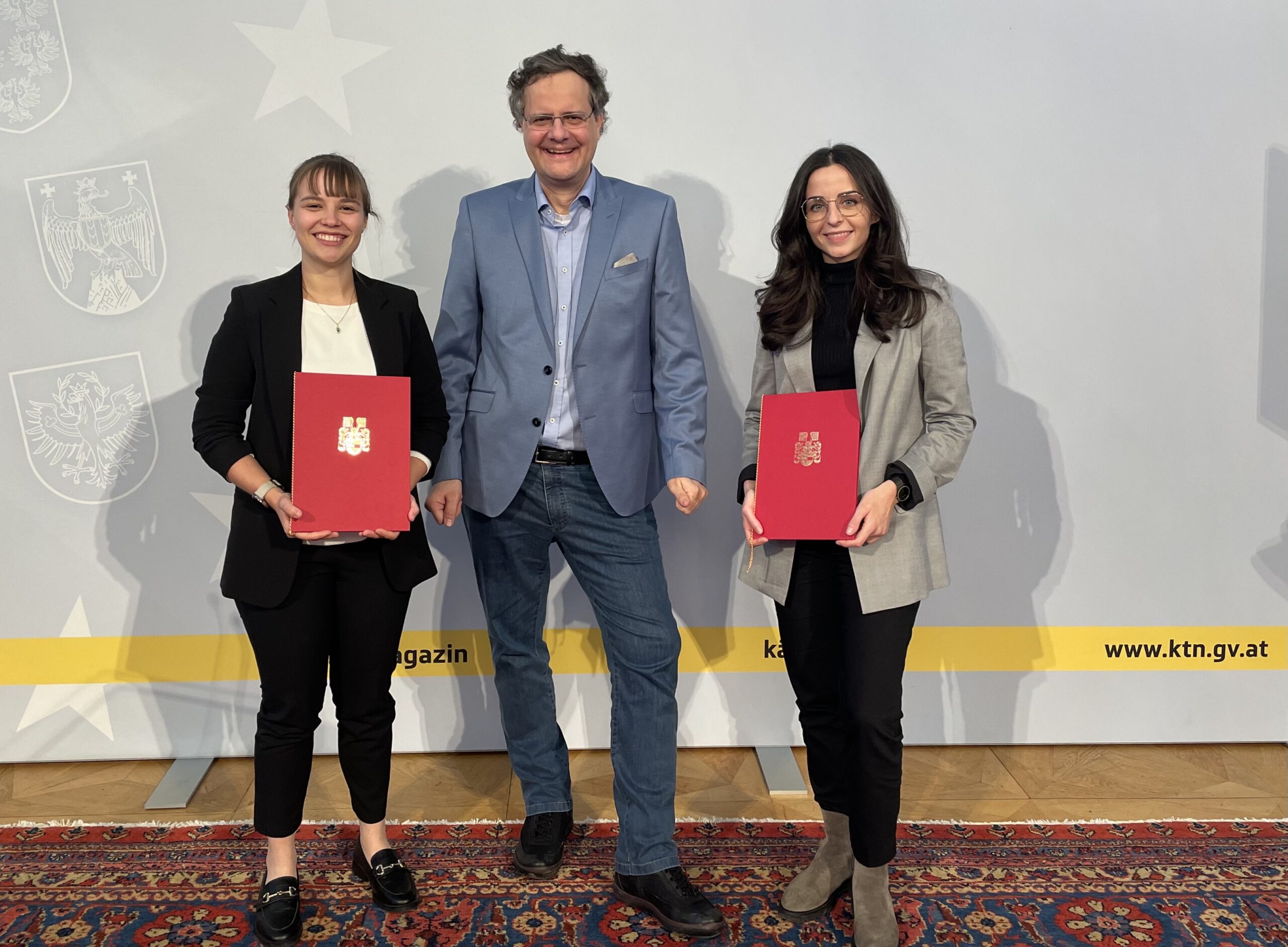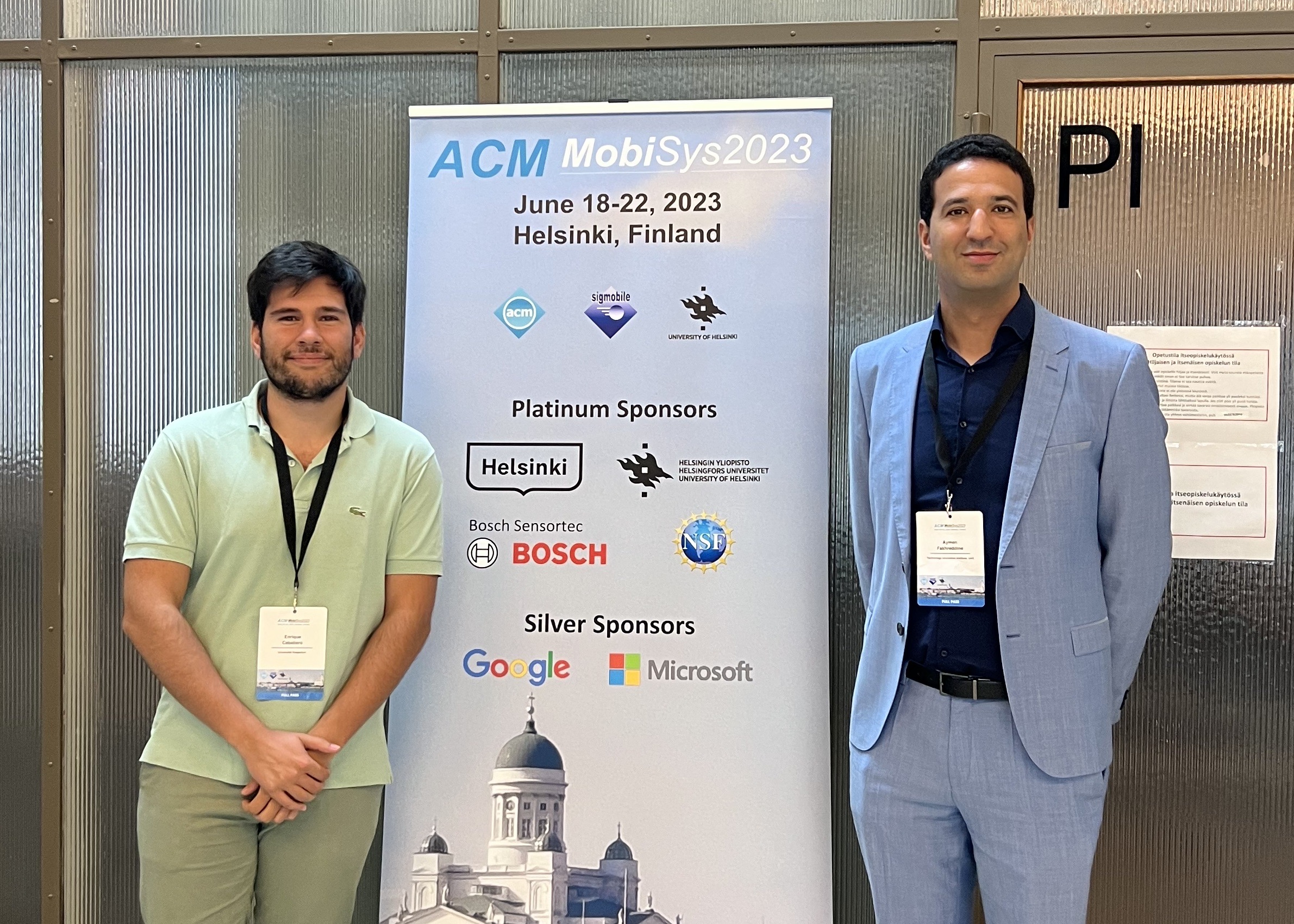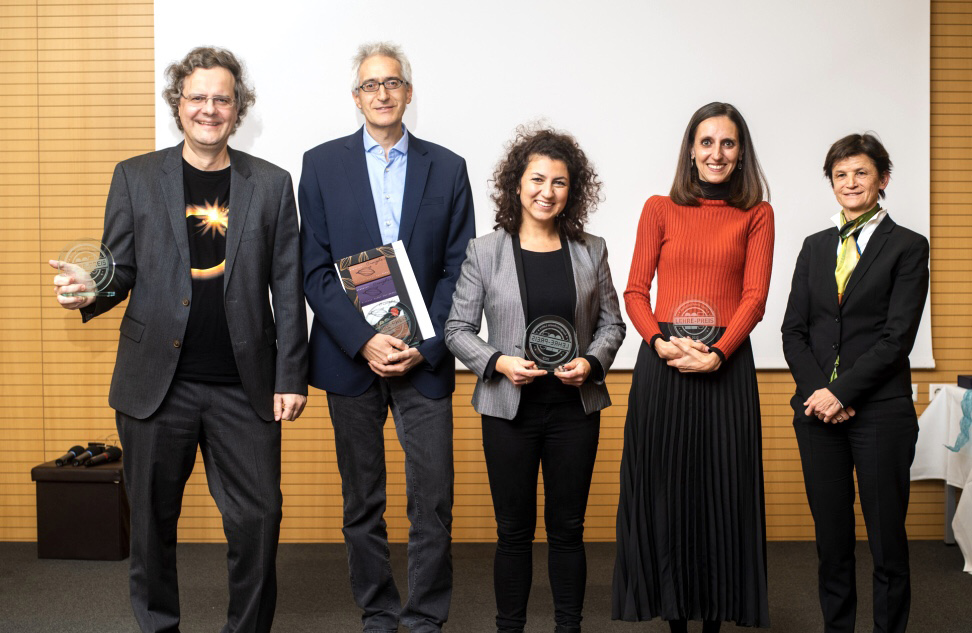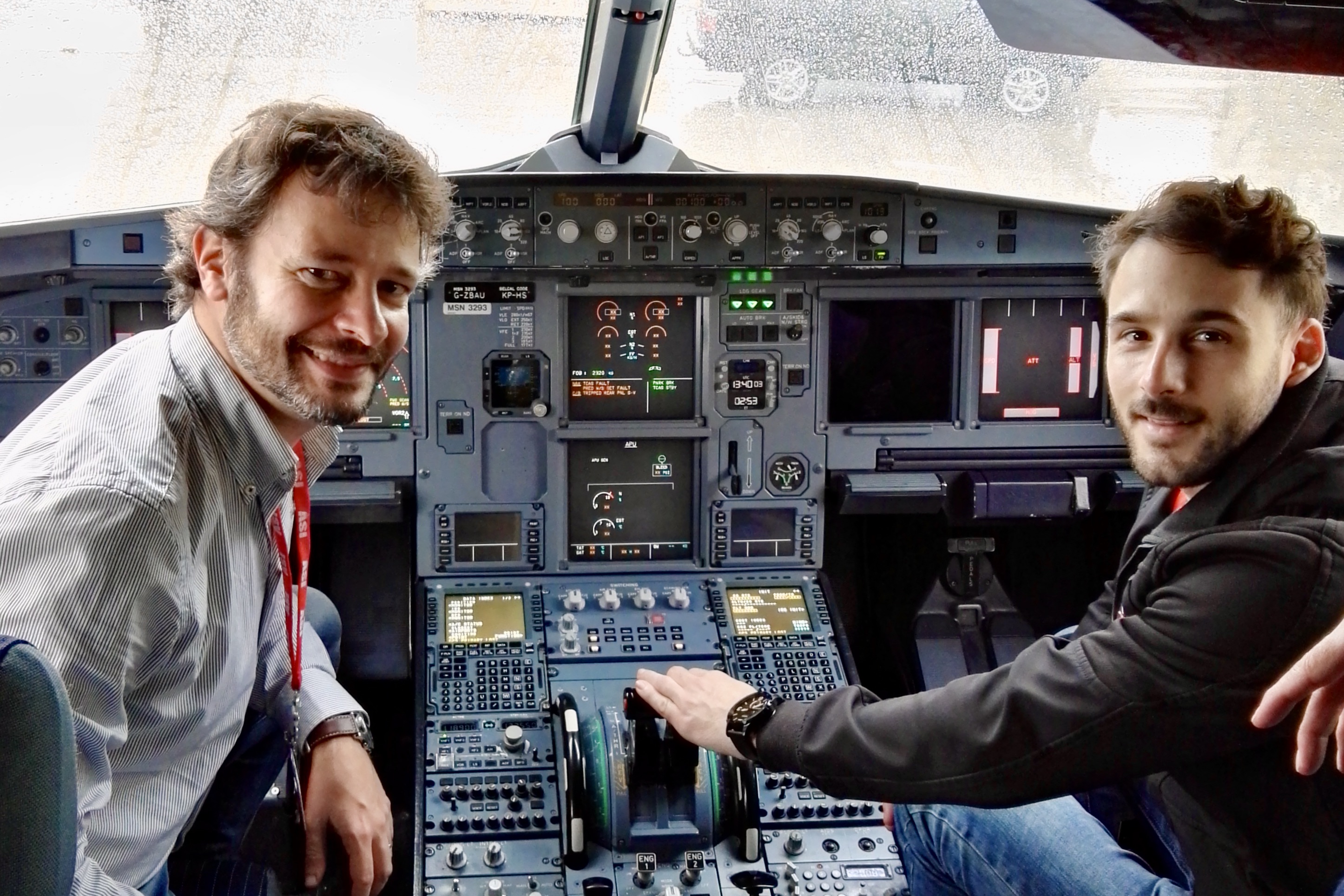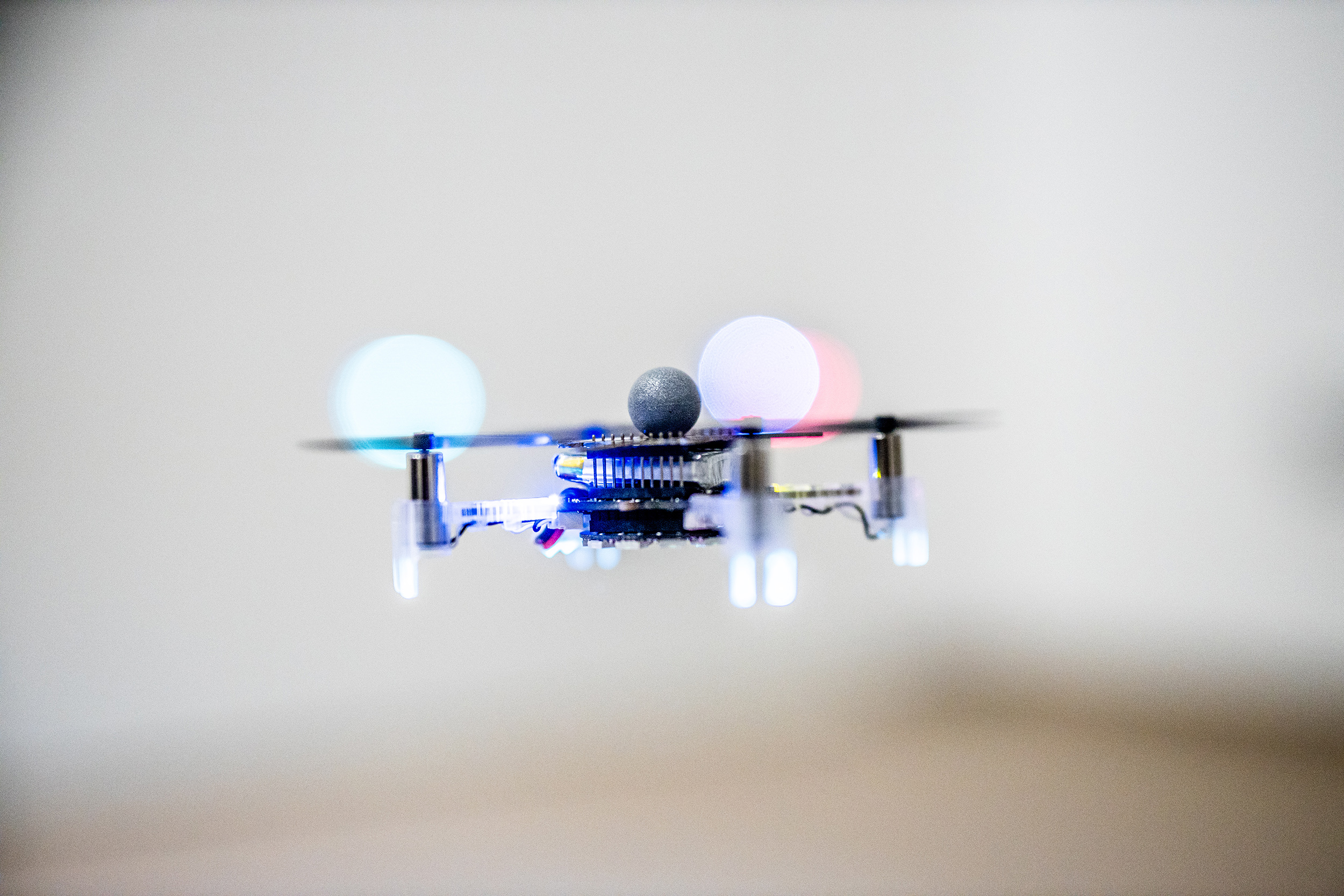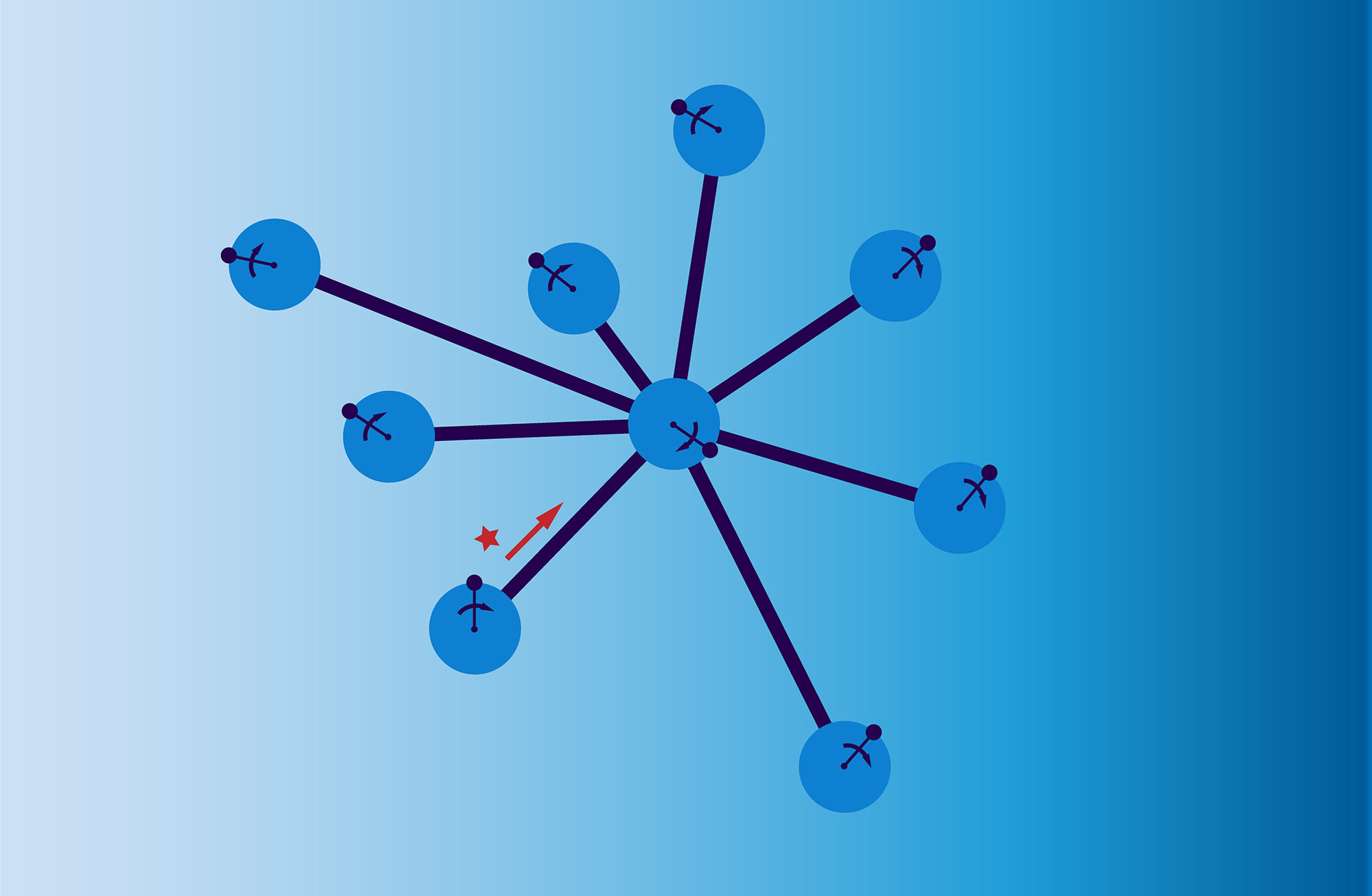Judith Wieser and Melisa Midžan were honored for their bachelor and master theses on robot swarms for search and collect missions.
Latest Posts
Interference by drones to ground users
Aerial drones connected to cellular networks can affect the throughput of common cell phone users. System-level simulation results were presented at an ACM MobiSys workshop earlier this week.
Award for excellence in teaching
The University of Klagenfurt has honored exceptional commitment and quality in teaching with its “Lehrepreis.” The award recipients are Nilüfer Aydin, Christian Bettstetter, Andreas Bollin, and Sabrina Gärtner.
Hayat named “rising star” in networking and communications
The annual list Rising Stars in Computer Networking and Communications recognizes ten up-and-coming female researchers to honor their great career start. This year’s list features Samira Hayat, doctoral graduate from the University of Klagenfurt and now researcher at Lakeside Labs and founder. She is the first Austrian-based scientist to receive this award.
Drones in cellular networks
A new project investigates the integration of unmanned aerial vehicles in 5G networks and proposes a hybrid connectivity solution with Wi-Fi. The work is led by Aymen Fakhreddine and advised by Christian Bettstetter. Funding comes from the Austrian Science Fund (FWF).
Written by Christian Bettstetter and Aymen Fakhreddine
Wireless connectivity is a fundamental component in drone systems with high demands for reliability, security, and performance. Some drone applications need to transmit huge amounts of data or require ultra-low latencies. The wireless technology used in most commercial drones is Wi-Fi, but it only partially meets the high requirements. Therefore, integrating drones into cellular networks is an exciting option, either as a replacement or supplement to Wi-Fi. A new three-year research project at the University of Klagenfurt addresses this issue. Funding was secured from the Austrian Science Fund (FWF) in the amount of about 288,000 € from the ESPRIT postdoctoral program. The work is embedded into many ongoing activities on multi-drone systems in Klagenfurt (uav.aau.at).
“The integration of drones into cellular networks has not yet reached the desired maturity. These networks were certainly not developed and deployed to be used by flying devices. There are multiple problems related to interference and handovers,” project leader Aymen Fakhreddine explains. Along these lines, the goal is “to ensure that, when connected to cellular networks, drones support data transmissions at very high data rates in the uplink, while the downlink connectivity remains highly reliable for remote control and steering.” This integration of aerial users into cellular networks should not impair ground users for which cellular networks were primarily deployed.
A particular project focus is on enabling beyond visual line of sight drone operations. Drone manoeuvres are to be controlled in real time by means of command data sent via 5G from a processing entity or a human operator that receives a video stream from the drone itself. Another key objective is investigating drone-to-drone communication for applications that require multi-drone systems. This communication can be performed through the cellular network or by bypassing the ground infrastructure via direct communication technologies such as Wi-Fi. Both approaches differ in terms of the provided coverage area, adaptability, security, reliability, and support of real-time functions. The project will discuss the applicability domains of each approach to design a hybrid use of both by proposing a mechanism that opportunistically chooses the suitable wireless technology in concordance with drone mission planning requirements.
This post is based on the public relations (PR) abstract of the project proposal. Funding is received from the Austrian Science Fund (FWF), grant ESP 54 ESPRIT program. Feature image from Google Maps, modified with the locations of base stations and a drone flight route.
Teams of robots that don’t run out of energy
Let’s imagine a large region affected by an earthquake that needs to be combed for missing persons. Because buildings remain at risk of collapsing, this is a task that is particularly well-suited to robots. Micha Sende addressed this kind of scenario in his doctoral thesis.
Written by Romy Müller for the University of Klagenfurt. Feature photo by Romy Müller.
“What is special about this is that all the robots have the same role, in other words, no-one acts as coordinator,” Micha Sende explains. His research focuses on energy autonomy, asking questions such as: How much energy do I have left? How much energy do I still need to complete a specific task? How long can I continue to work, and when do I need to recharge? Which charging station should I head for, and which one is free at the moment?
When asked what makes this task rather complex, Micha Sende answers: “A robotic lawnmower or a robotic vacuum cleaner have a comparatively easy job. They know the territory and they usually work alone, not in a team.” Moreover, they do not have to work in an optimised way, i.e. a few extra laps around the living room are usually quite acceptable. But when it comes to searching for missing persons, it is essential that the robots work as quickly and efficiently as possible and that no breakdowns occur.
Above all, the scenario involving several robots and several charging stations had not yet been extensively researched, Micha Sende continues. At this point he also mentions electric cars: Here too, relatively little research has been undertaken to date.
Micha Sende has recently completed his doctorate. Most of the work was carried out at the computer using simulations; towards the end, the scenarios were also tested using real robots. Micha Sende is currently working as a member of the research team at the neighboring Lakeside Labs GmbH.
Micha Sende first came to Villach as part of his industrial internship for his diploma degree and later he landed a doctoral position in Christian Bettstetter’s research group at the Institute of Networked and Embedded Systems. “Self-organizing systems appeared especially captivating, which is why I focused on this area,” he tells us. He describes their advantage: “By relying on self-organization, we can build fully functional systems that can no longer be controlled from the outside due to their complexity.”
This article was originally published on the Website of the University of Klagenfurt (October 6, 2021). Posted here with kind permission.
“Research and cultural diversity widened my horizons.”
Pasquale Grippa recently completed his doctorate in technical sciences. He spoke to us about his research focus—improving autonomous transport systems with the help of artificial intelligence. Read More
Wireless connectivity in airplanes
The aviation industry is interested in wireless solutions for in-plane connectivity to improve safety and reduce airplane cost and weight. Ultra-wideband (UWB) seems to be a suitable technology for this purpose due to low power consumption, high data rate, and coexistence with other systems.
Offloading computation to 5G networks: Helping drones to improve their autonomous navigation
Commercial drones usually come equipped with modest on-board computing power. Consequently, their speed and agility are somewhat limited when they use their cameras like eyes to navigate in space. Samira Hayat, a researcher at the Department of Information Technology, recently joined forces with colleagues from other departments and Deutsche Telekom to investigate the effects of offloading computation to the edge of the network (edge computing).
Deadlocks in the synchronization of oscillators
Certain oscillator networks suffer from deadlocks that prevent them from synchronizing. We derived the likelihood for such constellations in star graphs and found that they also occur in random graphs.
